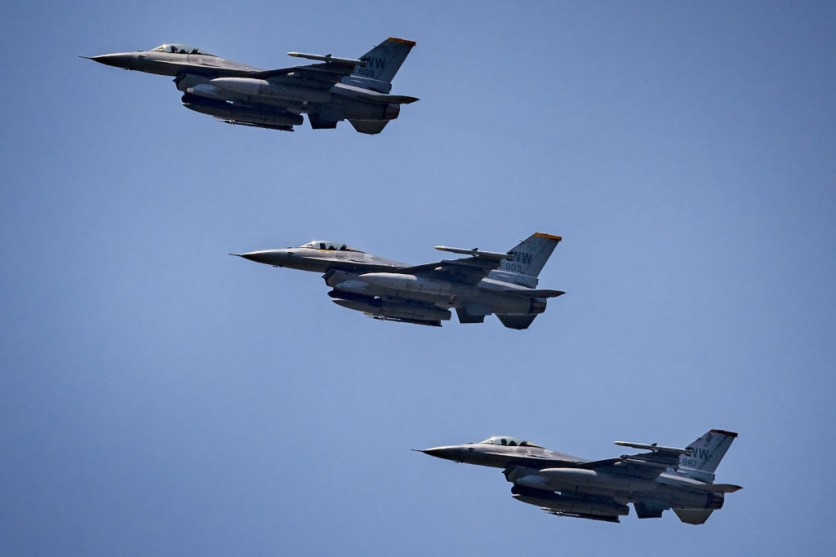The United States Defense Advanced Research Project Agency (DARPA) has officially released footage of the first-ever demonstration of an unmanned, artificial intelligence-controlled F-16 aircraft rehearsing several aerial combat scenarios against a human pilot.
In September last year, the US Air Force announced that two F-16 jets engaged in dogfighting at Edwards Air Force Base in California.
The two planes exercised protective and aggressive maneuvers and engaged in within-visual-range combat or dogfighting while soaring at speeds of up to 1,200 miles per hour. At one point, they were just around 2,000 feet (610 meters) apart.

(Photo: Photo by Ezra Acayan/Getty Images) MABALACAT, PHILIPPINES—MAY 09: U.S. Air Force F16 fighter jets fly in formation during joint U.S.-Philippines air force exercises dubbed Cope Thunder at Clark Air Base on May 09, 2023, in Mabalacat, Pampanga province, Philippines.
DARPA released a film of the nose-to-nose air combat, which showed the two jets swirling inside and outside each other, as they cruised across the sky.
The autonomous aircraft, the X-62A Variable Stability In-flight Simulator Test Aircraft, or VISTA, is a modified F-16 with an AI program.
Human pilots were on board the X-62A with controls to deactivate the AI system, but DARPA claims the pilots never needed to utilize the safety switch. DARPA does not, however, specify which aircraft won the duel.
Since its inception in December 2022, the jet has completed at least 21 test flights, totaling more than 17 hours of flying time. This is the first time machine learning has been utilized to operate a fighter jet.
Read Also: US Air Force Secretary Set to Fly in AI-Controlled Jet
AI Fighter Jet Pilots
During flight, the jet's AI computer analyzes data and makes real-time judgments, a machine-learning process similar to how combat pilots refine their instincts through years of practice.
DARPA believes that engaging in a battle between an AI-powered plane and a human is a "transformational" point in the history of aerospace.
While the winner in the actual dogfight done in the recently released footage remains to be stated by DARPA, AI has defeated humans in virtual dogfight settings.
AI in Virtual Dogfights
The last phase of DARPA's AlphaDogfight experiment in 2020 demonstrated that AI could outperform a human mind, particularly in air combat. Heron System's artificial intelligence outperformed a human F-16 pilot in the shootout. The AI pilot also overcame another AI built by Lockheed.
The virtual air battle prohibited using the fighter planes' additional weaponry, allowing players only to utilize the aircraft's nose cannon. Following the AI against AI bouts, the human F-16 pilot entered the conflict wearing a Virtual Reality (VR) helmet.
Although the anonymous pilot survived substantially longer in the last round by shifting tactics and techniques, Heron System's AI pilot won 5-0 against the human operator.
In 2016, it was announced that an AI bot known as "Alpha" could defeat an experienced human combat flying instructor.
The most recent tournament was probably more significant since it had a range of AI agents fighting against one another, followed by a human in a highly organized framework.
Ben Bell, a senior machine learning engineer at Heron Systems, stated that the combat was somewhat unfair because the AIs were not permitted to learn from their prior encounters. However, it did not hinder AIs' ability to overcome human operators.
Related Article: AI-Powered Drones Looks to be the Air Forces' Future With $6 Billion Pentagon Program

(Photo: Tech Times)
![Apple Watch Series 10 [GPS 42mm]](https://d.techtimes.com/en/full/453899/apple-watch-series-10-gps-42mm.jpg?w=184&h=103&f=9fb3c2ea2db928c663d1d2eadbcb3e52)



